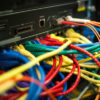The automobile changed more than the family, it also transformed the service and product economies. As the cost of sensors and internet connections continue to decrease, emerging IoT products and services will have a similar disruption on businesses.
IoT is evolving faster than organizations can adapt using traditional business models. IoT applications are driving customer and employee expectations, values and behavior. The real opportunity with the disruptive technology lies in pursuing and adapting to this digital transformation. Business organizations have competed on grounds of product features as the primary value proposition ever since the industrial revolution 250 years ago. Incremental product feature innovation led to price competition, compromising quality until the time product would become obsolete.
With Internet of Things, the competition is no longer limited to individual product features. Connected technologies enabling business services and product offerings themselves are not one-and-done. Real-time push updates and the ability to learn and respond to customer usage trends, lock-in customers and forces additional investments for enhanced functionality. This capability levels the playing field among small vendors and large enterprises that now compete on grounds of innovation instead of operating budget and scale.
Changing Business Models
This IoT-mindset forces disruptive business model innovation to encourage the customer’s willingness to pay for products and services promising unique customer experience. Business models leveraging IoT applications and cloud technologies for value creation address real-time and emerging customer needs in a predictive manner. All product updates incorporating specific customer usage behavior and pushed across the cloud network have immense synergy value. The connected infrastructure establishes information convergence and delivers high-value tailored services secondary to the initial value offerings considering the extreme customer segmentation. The product initially working as a standalone solution to specific, known problems transforms into smart solutions address issues that emerge in the future.
For instance, smart thermostats can learn usage patterns to program themselves to turn on and off automatically, follow appropriate schedules when no one is at home, or follow instructions from mobile phones on the go. In contrast, traditional thermostats following pre-defined schedules do little to optimize house temperature when needed and turn off energy-hogging cooling or heating systems when no one’s at home.
This example demonstrates how IoT applications and cloud technologies add immense value to a mundane home product. Along with the primary benefit of optimizing house temperature, IoT enables secondary benefits such as shrinking electricity consumption and controlling cooling and heating systems from mobile devices away from home as an even better value proposition in competition with otherwise better thermostat products. The competition is therefore drawn away from price and product quality and shifted toward IoT and smart connectivity to enable recurring revenue streams.
Influencing Business Future
The pervasive trend of leveraging IoT applications for business presents opportunities for ongoing disruptive business model innovation that encompasses a myriad of megatrends branching out from the technology itself. IoT has accelerated the growth of Big Data technologies, cloud computing, mobility, consumerization of IT and a range of intelligent, connected, analytics-driven and consumer-oriented technology use-cases for business. For those who can master it, IoT will become a business of its own. Advancements in digital communication technologies between machines and infrastructure is leading to virtual, automated and information-driven collaboration without physical human intervention. Personalization of technologies has shifted consumer preference and produced new grounds of competition for business organizations that go beyond the initial product offering itself.
Progressive business organizations must combine IoT applications and business models to adapt and capture unprecedented business opportunities resulting from the prevalence of connected products and services.








